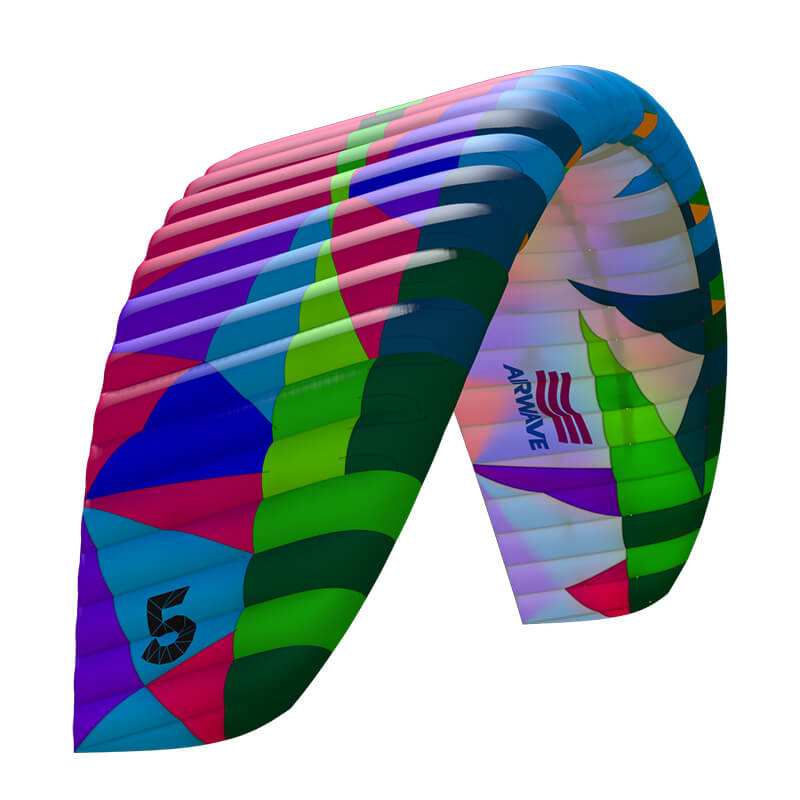When you purchase gear through links on our site, we may earn a small commission. Here’s why you can trust our tests and our affiliate partner.

Airwave are so stoked with their Koala that they were keen for us to test a range of sizes. Last issue we had the 10m on test, for this issue we’ve cut things down by 50% and taken the 5m out for a spin. To bring you back up to speed the Koala is not a kite for racing, and it’s not a kite specifically designed for lofty boosting (although it does this); the philosophy is very much that the kite can replace your LEI kites and offer comparable performance to what you get for them, and more…
The simulation software on which the Koala is built is called ALULA (no, not that one!) and is the brainchild of Tom Lolies. It formed the basis of his PhD project so it’s safe to say that he knows his stuff. The rest of the crew at Airwave have been designing paragliders for over 30 years so they know their way around these multi-bridled machines. Last issue we didn’t get into the bar, but this is well constructed and brings together all of the most recent innovations that you expect on a modern bar; depower is using a clam cleat and essentially, if you’re new to the foil kite game, it’s going to feel like a completely familiar cockpit.
As we discussed in our review of the 10m Koala, the build quality is exceptional and – for anyone coming to the Koala having not flown a foil kite previously – this really is a super easy kite to get your head around and to unpack, launch and land. On marginal days the 10m really gave us confidence to head out, the stability was insane, and even in the sub-8 knot range it was rock solid in the air when you would have been running in circles on the beach keeping your regular kite in the air. This is also true for the 5m although of course the wind range is higher. We tested the 5m in dead offshore wind with some pretty sketchy under-cliff launches and once it was up the kite is so stable, and the closed-cell construction keeps it in the air even when it feels like the wind has dropped right off.
Airwave reckon the 5m Koala is similar to a 7m LEI kite but with more usable power at the bottom end, and with more comfortable flying at the top end. We rode the 5m in a range of conditions from 15 knots through to around 30 and can testify that this is the case. At the lower end the big plus of the 5m is that you can really throw it around and generate power. The 10m definitely turned like a 12m LEI kite but we would say that the 5m does turn more like a 5 or 6m kite. It also spins nicely on the spot when required – it takes a little getting used to but you learn to fine tune the radius of your turns to get the required amount of grunt from it. Sheet out a little and move it in a wider arc and you can get up and going on the 5m on a twintip in around 17 knots – which is impressive… For foiling the 5m Koala is a lightwind machine and can easily get you going in 10 knots and – if the wind is patchy – gives you the confidence to take a small kite knowing that if you hit a hole it’s going to stay in the air. You can also really whip it around for quick transitions and, if you are following it downwind or picking up rolling swell offshore, it’s a spinning machine.
For general riding on a twintip or surfboard, the 5m has a different feel to your LEI kite but we found that after a couple of sessions you tuned into the subtle differences and performance was very similar, with smooth power delivery, good upwind performance and excellent lift. In the waves, the ability to really spin the Koala and to have the confidence to head towards it make it a decent option here and we wouldn’t be surprised to see some more serious exploration here by top riders…
Airwave are out to convince us that you can replace your quiver with a couple of Koalas and enjoy wider wind range, smaller pack size, no pump and equitable performance to an LEI kite and – on this evidence – we think they might be on to something.